Cave paintings dating back over 10,000 years in the south of France and some of the petroglyphs (rock art) in the deserts of America could be considered our earliest forms of star maps.
How far we’ve come since then. However, don’t dismiss old charts and maps as they contain a wealth of fascinating historical information.
They feature forgotten constellations or those that have changed their names, as well as grand artwork and indications of the society’s culture at the time.
A good star chart or star atlas can be an astronomer's best friend. Without the need for an electronic device of WiFi connection, they give you an annotated view of the night sky above you, enabling you to locate stars, constellations and deep-sky objects.
In this guide we'll reveal how to use a star chart or star atlas, and some of the best examples available to buy.

What star charts show us
One thing that has not changed in our modern scientifically accurate charts is how the brighter stars are shown by the biggest dots.
All stars are, of course, the same-sized single points of light in the real night sky, but it is impossible to show their brightness any other way on a printed page.
Our brains do seem to cope with this 'fudge' quite nicely.In fact, it's something you may never have thought about.
The other thing to consider isthe projection: when a three- dimensional sky dome is flattened and warped down onto a piece of paper.
Take a look at one of the finest star charty-things around – a planisphere – and you’ll see what I mean.
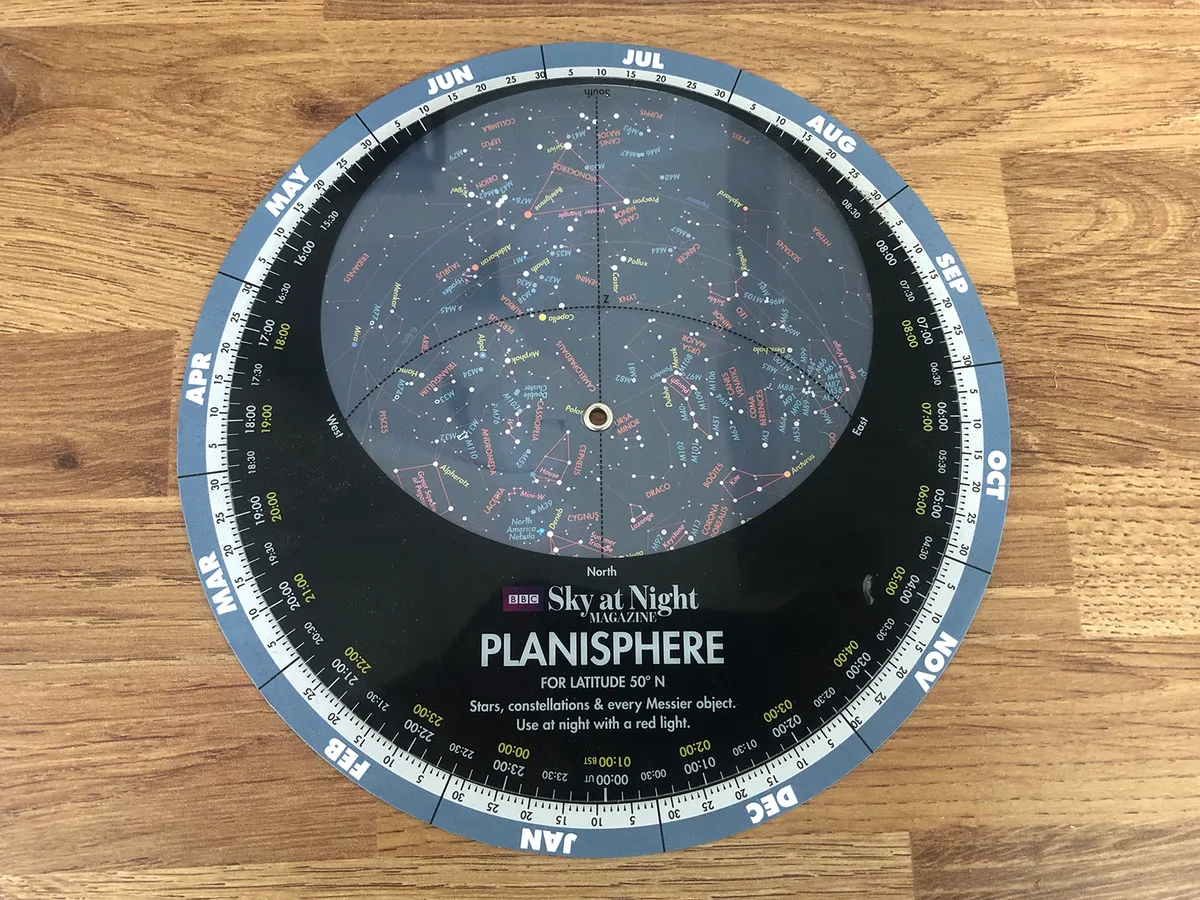
In an effort to squash the sky flat, the constellations are stretched out around the edge and look very different to the real sky.
This is also a problem with all-sky monthly charts found in astronomy magazines.
Again, this is something most of us can cope with, but for beginners it can initially seem quite odd when the real constellations look different to the printed ones.
Nonetheless, a planisphere is a bit of kit that you’ll always find useful.
But there’s more to atlases than just star positions and brightness – although they are, of course, vitally important if you’re trying to learn the sky.
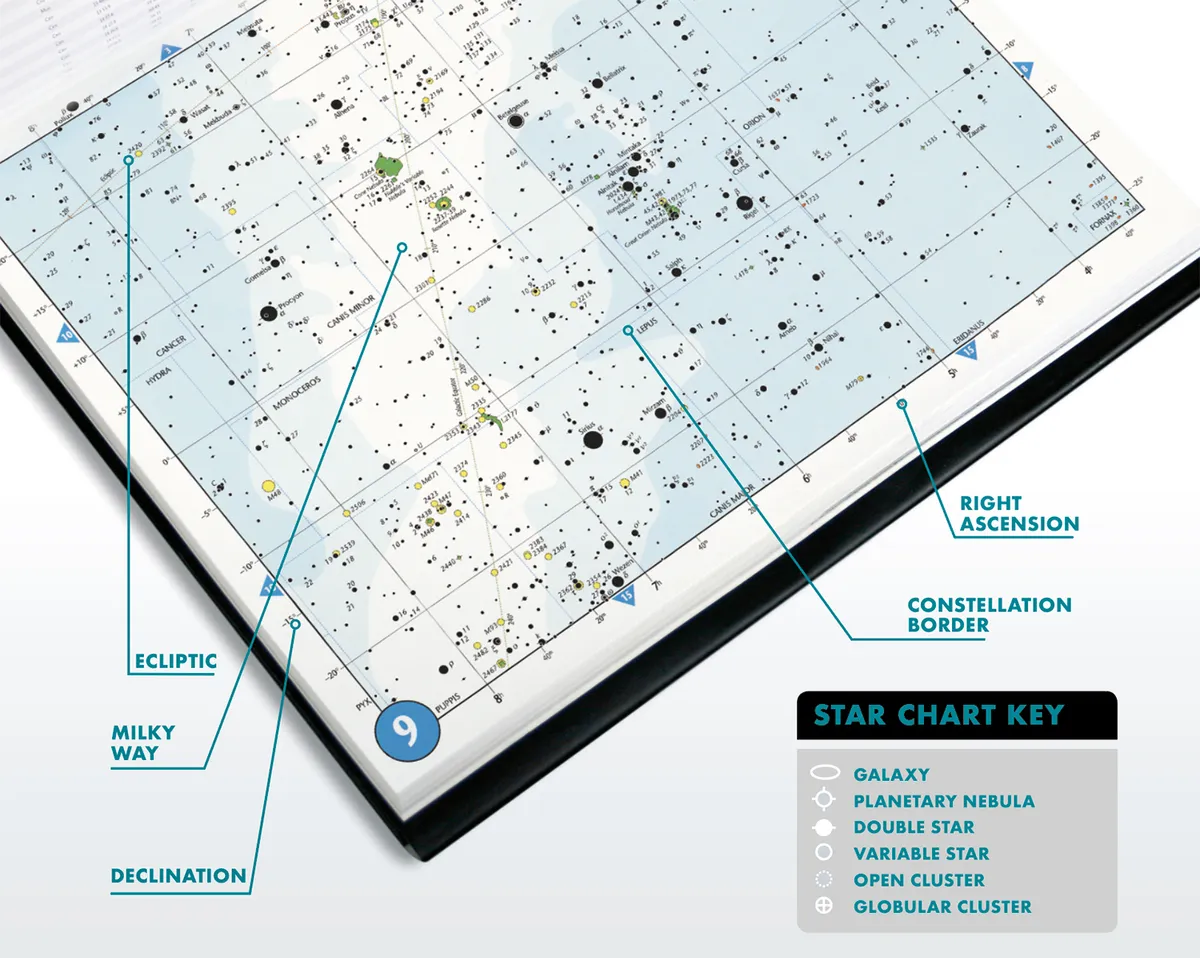
With symbols that don’t detract from the overall view, you can find stars that are variable (change in brightness), or double (optically or gravitationally together in the sky).
Depending on your atlas there may also be additional symbols for deep-sky objects such as nebulae, galactic star clusters, globular clusters, planetary nebulae and galaxies.
But let’s go back to map scales. A useful atlas should have charts that vary in detail.
You may, for example, have general seasonal charts or monthly charts, close- ups of some constellations and possibly a location chart for some of the deep-sky objects.
As a beginner it’s probably the seasonal or monthly charts that you’ll use the most, so make sure you’re happy with the style.
Understanding Greek in star charts
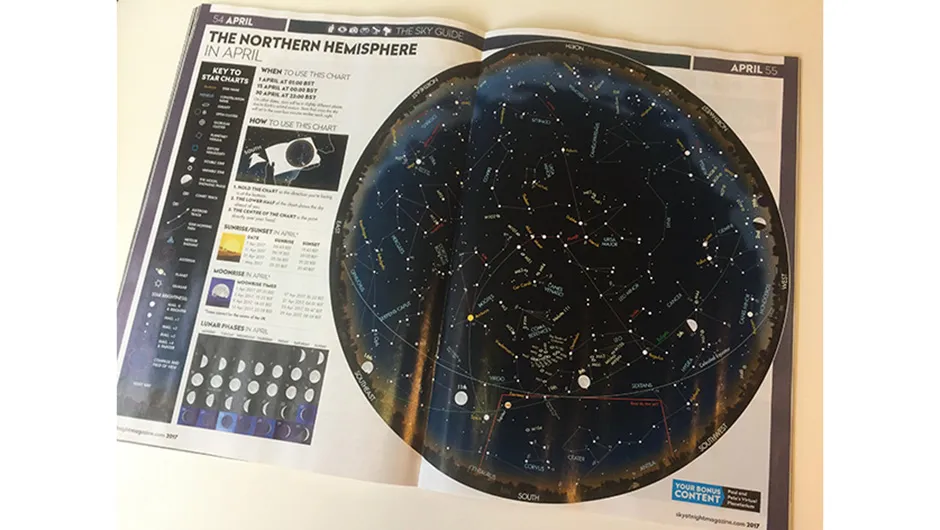
Who was the first person to map the sky? Why do constellations have a Latin possessive? Time to learn your Alpha, Beta, Gamma.
The idea of understanding the sky was in evidence during Greek times.
Most of the information we have as regards their thinking and constellation designs comes from a giant multi-volume work, The Almagest (also known as The Great Syntaxis Of Astronomy), by the mathematician and astronomer Ptolemy around 150 AD.
Well over a thousand years later this ‘book’ found its way to Italy and was translated into Latin. Bingo! Latin names for the constellations.
Other astronomers have also had their turn at ordering the stars, which, up until the beginning of the 17th century were mainly known by Arabic names.
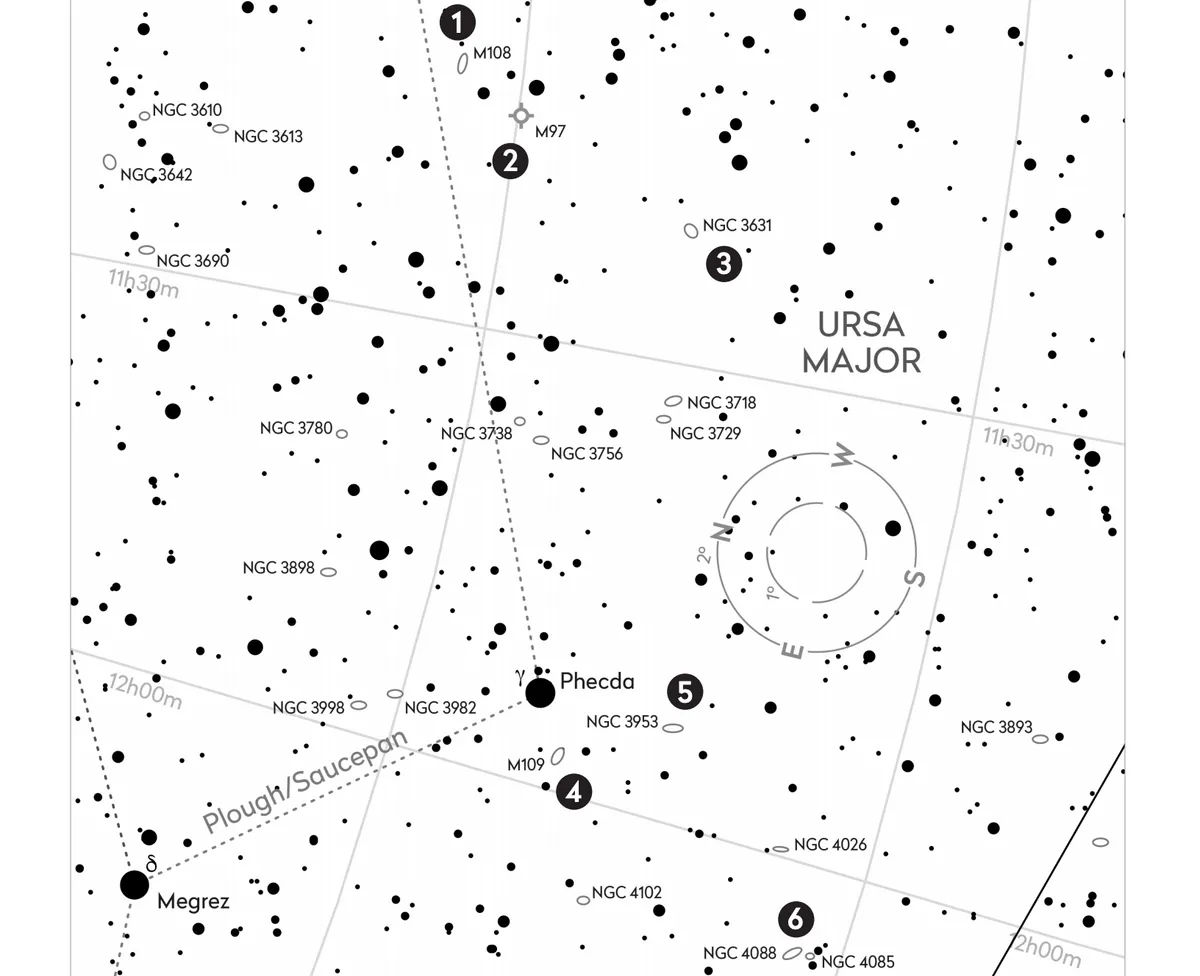
Johann Bayer, in homage to the earlier Greek astronomers, labelled the brightest stars of a constellation with Greek letters – usually, but not always, assigning alpha to the brightest, then beta, gamma, all the way to omega.
Using Ursa Major as an example, the Arabic star Dubhe is not the brightest in the constellation but was labelled by Bayer as alpha, and so is formally called alpha Ursae Majoris.
You’ll notice that the last two words are spelt differently – they are the Latin possessive for the name: they mean ‘belonging to Ursa Major’.
All constellations have a Latin possessive, such as Geminorum for ‘belonging to Gemini’.
All the constellations also have a three-letter abbreviation, which makes things quicker and easier to write.
Ursa Major’s is UMa so Dubhe, again, would be α UMa.
So now you're ready to get into star charts, here's our pick of some of the best.
Best star atlases and star charts
Observer's Sky Atlas

- Buy now from Amazon, Springer, Waterstones
This well-known book is a thorough examination of the science of observing the night sky, and of using star charts to help you do so. The book features descriptions of stellar magnitude and colour, how we actually see the night sky, as well as definitions and guides to the various types of objects.
It also contains thorough star charts for different times of the year, revealing what's visible in the night sky. Included are notes on how to use each star chart and a breakdown of some of the best targets.
Star Maps for Beginners

- Buy now from Thrift Books, Amazon
Star Maps for Beginners provides a month-by-month guide to what you can expect to see in the night sky, and includes a separate, detailed star chart for each month. The book describes the major constellations in great detail, and gives the reader a breakdown of what you can expect to see with that constellation’s boundary.
Also included is a history of the development of the standard constellations, the motions of bodies in the sky, notes on how to use the charts, and a bit about observing further with magnification.
Stargazing for Beginners
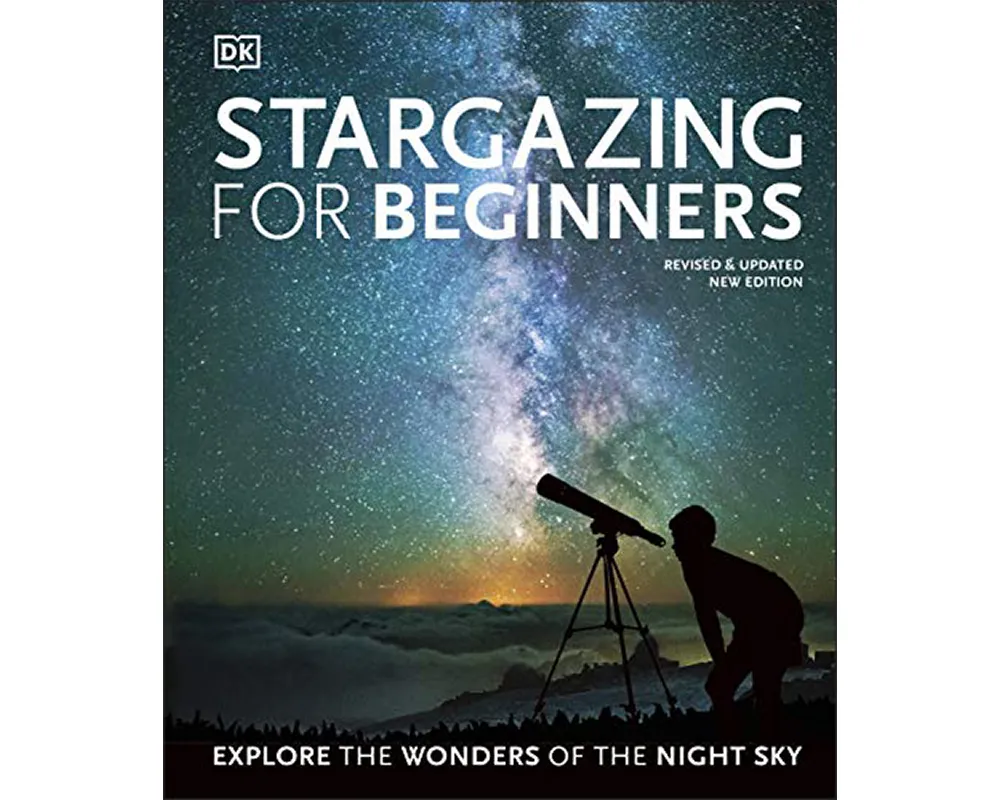
- Buy now from WH Smith, Amazon, Waterstones
Stargazing for Beginners is a great introduction to the night sky, and astronomy in general, with guides to the planets of the Solar System, stellar science, an introduction to deep-sky objects and all the beginners' cosmology you would expect from such a book.
But it also has a good deal of practical material for observing the night sky, and that includes monthly star charts that reveal what's in the night sky throughout the year, and a guide on how to use them effectively.
StarFinder for beginners
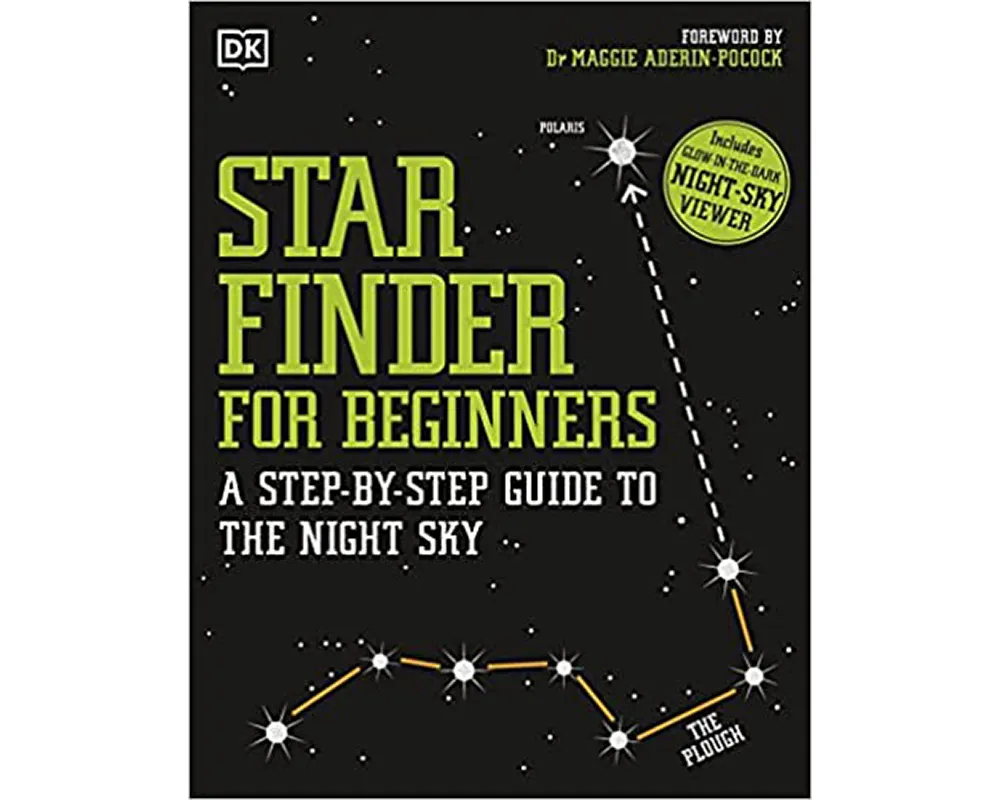
Rather than a strict star chart or atlas per se, StarFinder for Beginners is a guide to star-hopping, suitable for children and complete beginners, that guides the reader through locating stars and constellations, and then using them to navigate to other stars and constellations.
This is certainly a good choice for someone who is completely new to astronomy, but who wants to learn their way around the night sky before committing to a dedicated star chart or atlas.
Cambridge Star Atlas
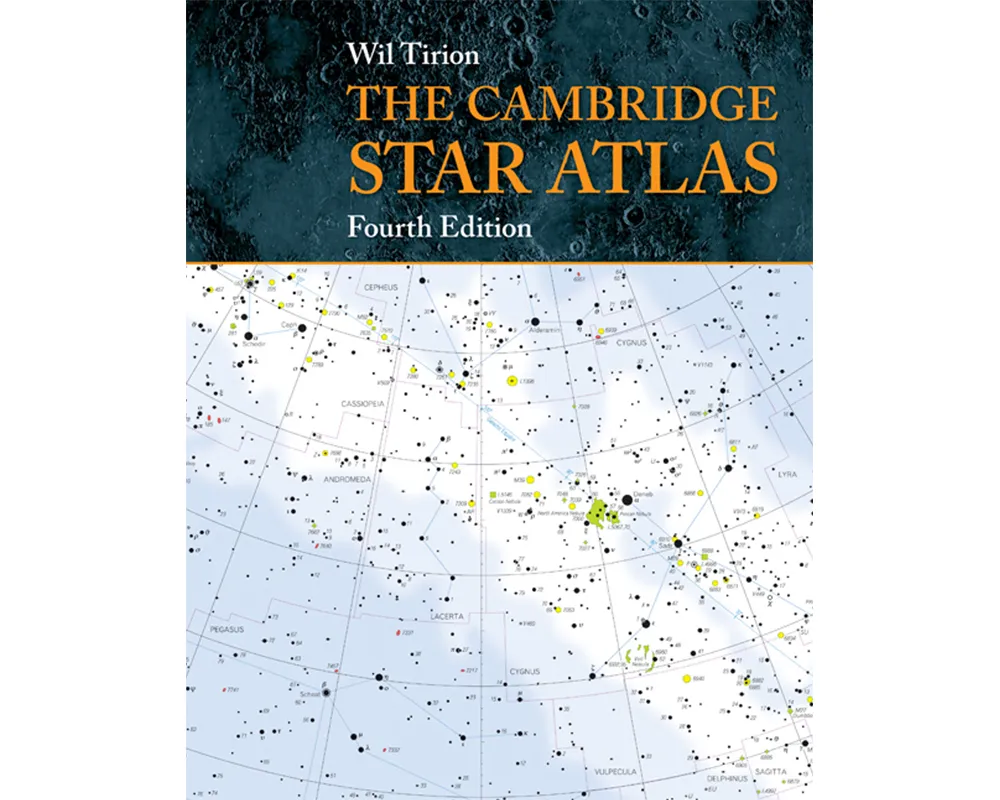
- Buy now from Cambridge University Press
The Cambridge Star Atlas is a classic, and well worth its reputation as one of the most comprehensive and reliable star atlases available.
It features full colour star maps that point the observer to the best targets to observe in the night sky, and later editions also feature detailed guides to observing features on the surface of the Moon.
Collins Atlas of the Night Sky

The Collins Atlas of the Night Sky is another reputable star atlas that features a wealth of information for both the northern and the southern hemisphere.
It includes information on locating stars, constellations, novae, globular clusters and other deep-sky objects.

